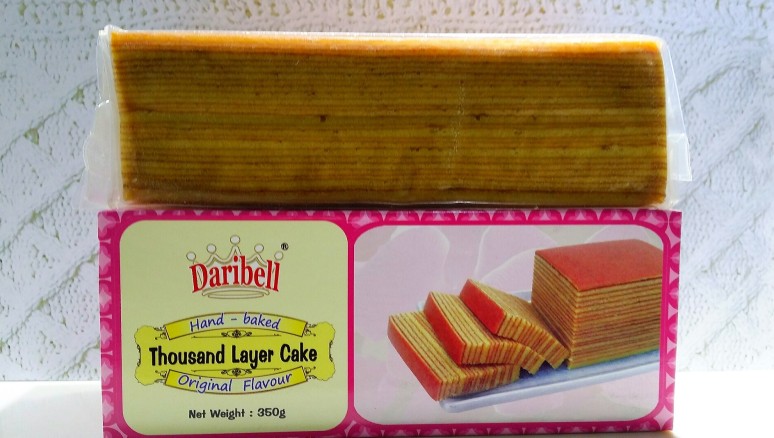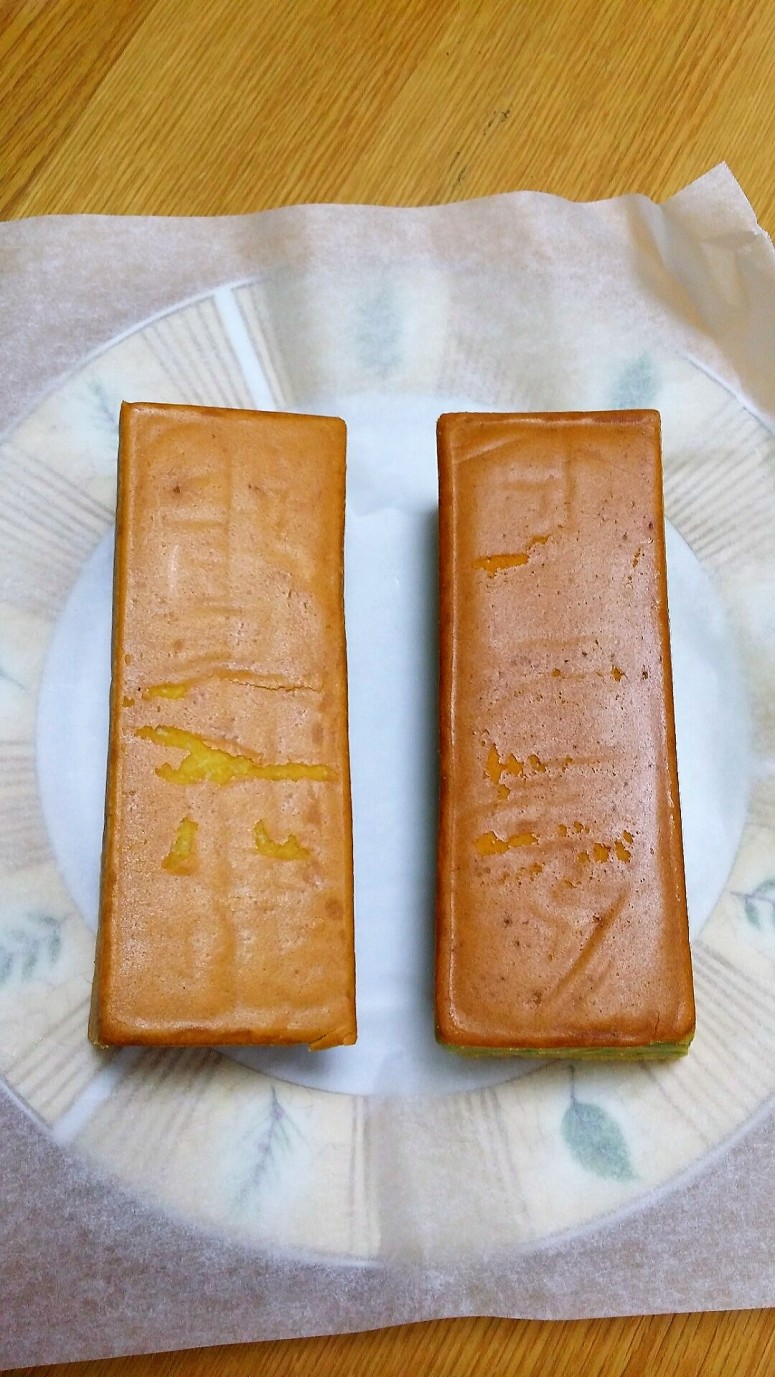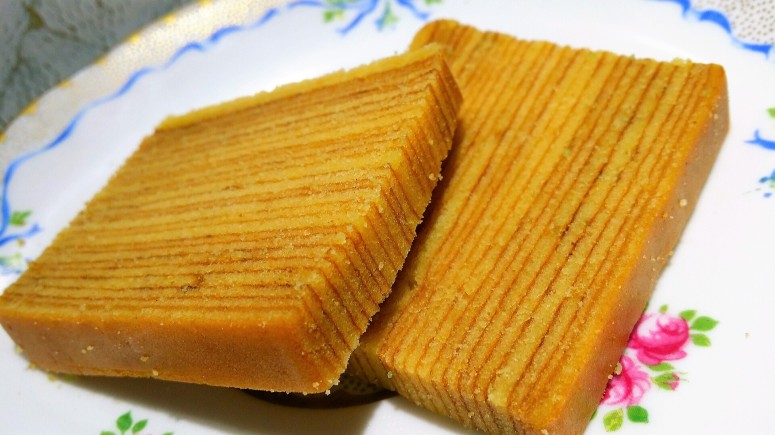I was inspired to pen this post while watching an episode from season 10 of The Great British Bake Off (‘The Great British Baking Show’ in the US and Canada). While watching one of the episodes (a rerun), I was surprised and ecstatic when Noel announced Festival Week’s show-stopper challenge. Contestants were instructed to create their own renditions of the Kek Lapis Sarawak. Kek lapis, or ‘layer cake’, has officially made it on to the world stage! Seeing it as a sign, I made a mental note to get some too.
Kek Lapis Sarawak is native to the state of Sarawak in Malaysia. The version that is widely available in Singapore is the kek lapis legit, which I refer to as the ‘regular’ layer cake. It isn’t as colorful as its Sarawakian cousin, nevertheless, it’s a showstopper. Furthermore, lapis cakes are normally served during special occasions. I’m thrilled to welcome you to the magnificent world of kek lapis legit!

Embarking on a journey of creating the layer cake at home isn’t a walk in the park. It’s a labor of love. Alternating thin layers with cake batter (some possessing different flavors) is an intricate process. After a single layer has been spread out in a baking tin, the batter goes into the oven. Once it’s ready (after 5 minutes, or when the top is browner), it’s removed from the oven. Yet another layer of cake batter goes on top and it’s placed back into the oven. That process is repeated many, many times over! After all, it’s lovingly referred to as the ‘thousand’ layer cake.
Kek Lapis Sarawak takes the art to another level as it comprises of ‘woven’ effects. In the words of Paul Hollywood, the Sarawakian layer cake is “one of the most difficult” baking challenges seen on Bake Off. Patience, dedication and passion are key!


Kek lapis (kek = cake; lapis = layer) is originally from Indonesia, and its roots trace to the Dutch colonial era. The lapis we know and love also goes by the name ‘spekkoek’.
Recipes for lapis cakes vary as different flavors can be included. This is reflected in Bake Off too – orange, chocolate, salted caramel and chai were some of them. Pandan and dates are common in Southeast Asia, along with the traditional flavor profile. The ‘original’ cake comprises of a medley of spices.

Kek lapis has always been – and forever will be – one of my absolute favorite Southeast Asian desserts. It’s a must-try if you’re in Singapore, Malaysia and Indonesia. It’s one of the “you’ve got to try this before you leave” foods!


I typically purchase lapis cakes from local specialty bakeries, but it wasn’t possible for me to make a trip and buy some. Several weeks later, the awaited promise of kek lapis was delivered, and the blessing of this sweet treat arrived in a double portion!
The only other place that would have these cakes is the supermarket. It isn’t the same as having a freshly-baked batch, but I was ready to dive into the experience. Boxes of lapis cakes from the Lion City’s southern neighbor, Indonesia, are available at supermarkets.



Oh. My. Goodness. Upon unwrapping the cakes, “Hello, world!” in the form of two fragrant greetings arose. I could only imagine a blended scent of 6 cakes filling the Bake Off tent, considering that these two cakes are aromatic together!



The packaged cakes require heat to both soften the texture and elevate flavors further, although biting into them straight away is perfectly fine if you can’t wait any longer! I popped them into the oven for a short while (just over 5 minutes at 180°C, as I didn’t wait for my oven to pre-heat prior to that) and sliced them when they were cooled.


Lapis cakes are soft and dense. Usually, each slice isn’t too thick, neither is it too thin due to its density. Heating these cakes did the trick – they were softer after sitting in my oven.



Based on the ingredients list, cinnamon, cardamon, clove, mace and vanilla are featured in the ‘original’ layers (i.e. the brown layers). To my delight, cinnamon is camouflaged into the mixture so well that anyone who has a love-hate relationship with cinnamon will love this cake to bits. As all the spices aren’t too strong, it’ll fit a wide range of flavor palettes.
The cakes funnily remind me of a choir ensemble. Like members of a choir group that’s been lined up, each layer in the original cake is harmonious as they contain a uniform note.



As for the pandan version, pandan juice is included in the cake. Five radiant green pandan layers take the lead gently. This allows vanilla (it seems like those brown layers are vanilla-flavored as spics aren’t listed in the ingredients list) to chime in and shine alongside them. I would’ve liked a slightly stronger pandan flavor, but otherwise I loved the cake holistically. Everything’s baked excellently as well – they fit the lapis criteria. All in all, these lapis cakes are awesome. I wouldn’t mind having them again!

I hope other regional tastes will be featured on Bake Off in the future! Also, I can’t wait for the new season to air! In the meantime, I’m patiently waiting for the day I can visit bakeries for some more delicious bites.

Those look so good!
LikeLiked by 1 person
Thank you! 🙂
LikeLiked by 1 person
The cakes look so delectable. I have heard and also seen the preparation of these cakes. I love the Great British Bake Off too. Is that the latest season? I haven’t seen it.
LikeLiked by 1 person
Thanks! Yes, it’s the latest season (2019). I can’t wait for this year’s Bake Off! 😊
LikeLiked by 1 person
Looks delish
LikeLiked by 1 person
Thank you!
LikeLike
What an interesting and beautiful cake! I would love to try this someday. It is indeed a labor of love to make these cakes and should be savored. I am not big on pandan flavors if too strong. Pandan is used in Philippine cooking as an aromatic to make rice cakes and rice fragrant. I see it more being used to flavor Filipino pastries nowadays. I love cinnamon, though! I know someone who just could not stand cinnamon but I love it in food and in candles!
LikeLiked by 1 person
Thank you! I love pandan because of its aroma and cool green color. It looks like pandan is Southeast Asia’s trademark flavor! I would love to try Filipino pastries. I cooked pasta with Filipino-style pasta sauce for lunch today for the very first time and enjoyed its flavor! It’ll be fun to taste more foods from the Philippines. Pandan is paired with rice in some savory dishes here too. Western desserts with pandan are popping up nowadays. I usually tolerate cinnamon in fall and winter, as I can’t imagine skipping all the seasonal spiced treats ha ha 🙂
LikeLiked by 1 person